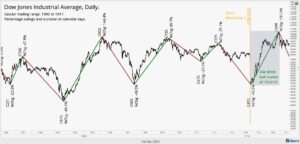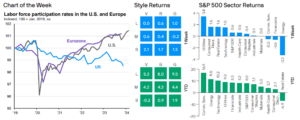Yesterday, we discussed many of the ramifications surrounding Tesla’s (TSLA) addition to the S&P 500 Index (SPX). As lengthy as that article might have been, one point required more clarification than time and space permitted. Today’s piece will go into far more detail about how the index addition might affect tomorrow’s quarterly expiration.
Two unprecedented phenomena will be converging. The index has never added such an immensely large stock at the same time that options volumes and open interest are at record highs. One of my mantras is “every time a stock moves through a strike, someone needs to re-hedge.” Tomorrow we have the potential for many more stocks than normal to do so at the close, when re-hedging is difficult or even impossible.
The problem is “pin risk”. Pin risk occurs when someone holds an option that is right around a strike on expiry. It is particularly acute for those who are short options. Options market makers – who hold positions in multiple classes and are more likely to be short options than speculators – are quite concerned with pin risk around expiration, but I doubt that it is fully appreciated by relative newcomers to the options markets.
Here is an example. Microsoft (MSFT) is just under $220 right now. (Let’s pretend that we’re 5 minutes from expiry, not 2 full trading days). If you are long a $220 call it is out of the money right now, but if it crosses the strike it’s in the money. When you have a while to go to expiration, the delta change would be relatively minimal – say from 40 to 60. The closer you get to expiration, the more binary that becomes. At 3:58 on expiration, the delta of a $220 call with the stock at $219.50 is roughly zero. If MSFT suddenly closes at $220.01 the delta flips to 1.
This can wreak havoc on traders, leaving them longer or shorter than expected. And it’s much worse if you’re short options. In the example above, the call holder can simply decline to exercise if she doesn’t want to be long MSFT over the weekend. If you are short that call, the decision rests with someone else. It means you don’t really know what your delta exposure will be some time after the exercise deadline
What makes tomorrow so treacherous is that the SPX rebalance will be simultaneous with expiration. It is quite normal for major indices to rebalance around expirations. But the addition of TSLA makes this a highly unusual rebalancing. Indexers will need to buy billions of dollars’ worth of TSLA and sell a nearly equal amount of the other 499 stocks in the index. As we mentioned before, this is a never-before seen quantity of shares. Pretty much everyone has reason to expect some sort of movement from TSLA on the close, but I don’t think that people fully appreciate the risk that the other stocks can move up or down through strikes on the close.
This is the crux of the matter. The open interest in those other stocks is at a record high, meaning that overall pin risk is at a high as well. Both large and small components of SPX have the potential to swing when imbalance orders hit the market, but the open interest is heavily concentrated in the large tech stocks that make up about 25% of SPX. For example, as of last night the open interest on the 220 line in MSFT – the second-largest component of SPX – was just over 35,000 contracts. Thus far today we are seeing volume that nearly matches that open interest, so it is likely to rise further before tomorrow’s close. While we can’t specifically know which stocks might move through strikes, with so many strikes, so much open interest, and so much potential for large imbalances on the close, we have to assume that there will be at least some stocks that will move through strikes right on the close.
Unfortunately there is little that traders can do in advance to prepare for pin risk other than to be extra vigilant as expiration approached. We need to monitor positions carefully and be prepared to make some tough decisions about whether to close risky positions or let them ride into a potentially bumpy close. That vigilance extends to the after-hours session, when options holders may need to decide whether to offer special exercise instructions about positions that unexpectedly test their capital limits and/or hedge any unexpected exposure. And if these past few sentences made little sense to you, that probably means that you should err to the side of caution.
Read Steve’s Referenced Post Here:
What to Expect When You’re Expecting Tesla to Join the S&P 500 – Traders’ Insight
Disclosure: Interactive Brokers
The analysis in this material is provided for information only and is not and should not be construed as an offer to sell or the solicitation of an offer to buy any security. To the extent that this material discusses general market activity, industry or sector trends or other broad-based economic or political conditions, it should not be construed as research or investment advice. To the extent that it includes references to specific securities, commodities, currencies, or other instruments, those references do not constitute a recommendation by IBKR to buy, sell or hold such investments. This material does not and is not intended to take into account the particular financial conditions, investment objectives or requirements of individual customers. Before acting on this material, you should consider whether it is suitable for your particular circumstances and, as necessary, seek professional advice.
The views and opinions expressed herein are those of the author and do not necessarily reflect the views of Interactive Brokers, its affiliates, or its employees.
Disclosure: Options Trading
Options involve risk and are not suitable for all investors. Multiple leg strategies, including spreads, will incur multiple commission charges. For more information read the "Characteristics and Risks of Standardized Options" also known as the options disclosure document (ODD) or visit ibkr.com/occ
































